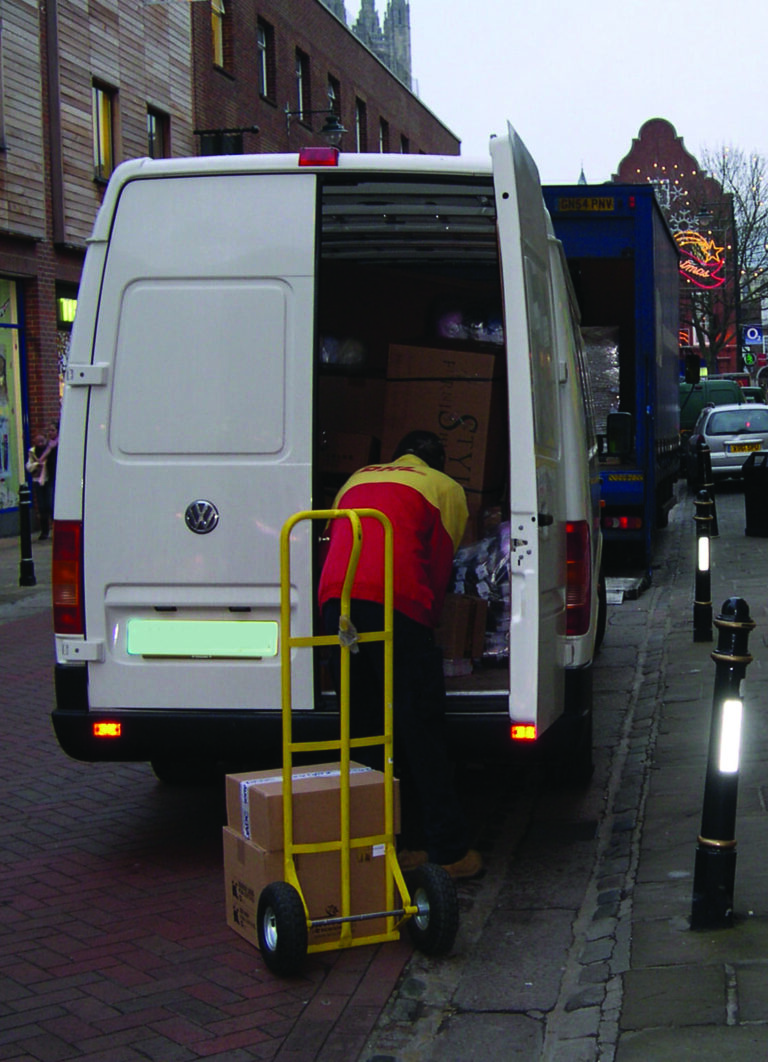Natalie Chapman, head of south of England and urban policy at the Freight Transport Association (FTA), details how the meteoric rise of internet shopping is ushering in an era of unprecedented change in the logistics industry.
Convenience has played a major role in the popularity of online shopping. Purchasing items from the comfort of your sofa, with easier access to price comparisons and the often added bonus of free returns, proves to be a much more comfortable alternative to high street shopping, which often comes with a battle for parking, navigating store layout, queuing for checkouts or frustrating ‘out of stock’ situations.
The rise of technology has also played a vital role, allowing consumers to shop using both apps and the internet across a multitude of devices, resulting in quick and easy purchases.
Caught in a loop, the rise of e-commerce has seen the permanent closure of many high street stores and businesses. And, with fewer stores opening, levels of internet shopping are set to increase exponentially. With major retailers such as Marks and Spencer and Debenhams becoming the latest to announce store closures, it is predicted that in 10 years the internet will account for 53% of all retail sales.
Throughout the growth of internet shopping, customer expectations have also risen. Individuals and businesses expect faster, more flexible delivery at very little, or no cost. The emergence, and success, of Amazon Prime has laid the foundations for other retailers. Companies such as ASOS, Boohoo and Next have all introduced subscription schemes offer free next day delivery for a year in return for a small, upfront payment.
The majority of these ‘just in time’ deliveries see a high level of overnight activity among large courier companies. Delivery cut off times – ordering by a certain time to ensure next day delivery – exist to allow retailers to package up the items ready for couriers to collect and transfer them to central distribution hubs. From there, the items get processed and the delivery vans get loaded ready for distribution.
These schemes work well in the urban environment, due to the density of demand, so it is often the case in cities that a driver’s drop offs are close together, with dozens of parcels being delivered to the same postcode. In these instances, the van may be parked up for long periods of time, acting as a mobile warehouse for the driver to work from.
In 2018, London, Birmingham, Glasgow, Manchester and Bristol topped the list of the UK’s most congested cities, with drivers in central London averaging 7mph (11km/h) and spending 227 hours a year stuck in traffic. While there are widespread rumours that internet shopping is the cause in rising van traffic, a report by RAC Foundation dispels this misconception.
Despite 65,000 unique light commercial vehicle (LCV) journeys into London every day, the RAC Foundation report notes that only 10% of van traffic in London is a result of internet shopping, with the overwhelming majority of van traffic being comprised of service vans, including small businesses and traders such as plumbers or electricians.
Contrary to arrangements within an urban environment, consumer demand for next-day delivery in rural locations is placing additional pressure on the logistics industry, due to longer distances between drop offs. Where logistics companies could once carefully consolidate multiple orders to prevent back and forth between locations, the demand for speedy delivery has the potential to result in less efficient operations and higher total vehicle activity.
However, rural delivery can be made more efficient and environmentally friendly through a variety of methods. Often, items are bought as and when the need arises, resulting in multiple next day deliveries throughout the week. Delivery services are becoming increasingly flexible nationwide with the opportunity to nominate a day you would like your items to be grouped together and delivered.
In the view of FTA, it is important that this is better promoted as a ‘green delivery’ choice to encourage more people to select a singular day for all parcels ordered throughout that week to be delivered on. If you are using the same website, such as Amazon Prime, or a dedicated courier, such as DPD, each time, selecting a designated day each week will result in fewer trips and therefore, less vehicle activity. Efficiency could be further increased by neighbours in corresponding postcode areas communicating and arranging a single day for co-ordinated deliveries.
Individuals – specifically those living in urban environments – are continually being encouraged by the government to live car free. While this is a vital step forward in reducing congestion and emissions, it does increase pressure on the freight industry as consumers become more dependent on online retail services, particularly for the delivery of bulky or heavy items.
While the industry is resilient and adaptable, in the opinion of FTA, free delivery is often undervalued. The logistics industry does a fantastic job of meeting customer’s increasing needs. However, more awareness should be given to consumers at the point of order. For individuals to make more conscientious decisions regarding their deliveries, it is important for them to first understand what the implications of their delivery choices are, and what it will take for their item(s) to reach them.





